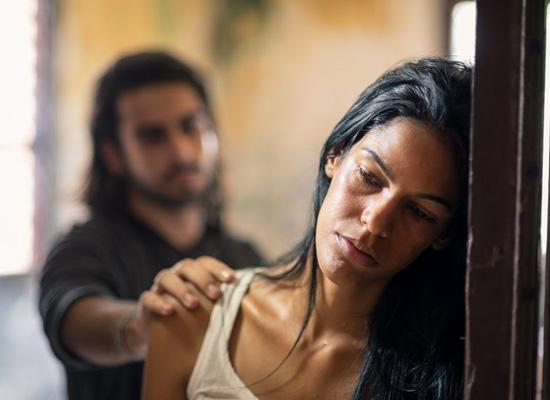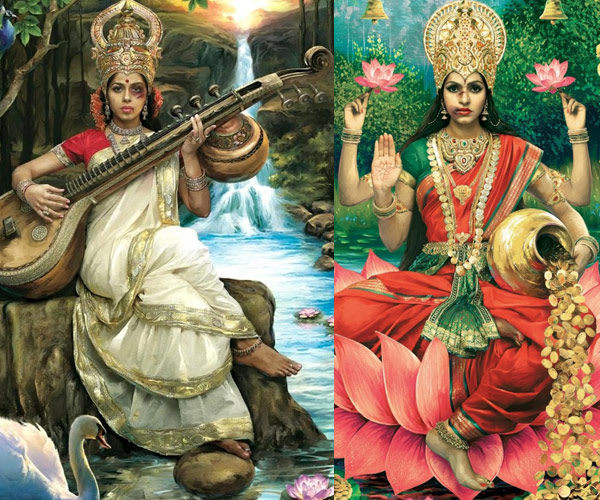Source: https://in.lifestyle.yahoo.com/ugly-truth-behind-happy-marriages-india-135011684.html







Video courtesy: ManKind Initiative

When a girl dreams of her wedding, she thinks of a “happily ever after”. She dreams of a home where she will get a lot of love and affection from her husband and in-laws. Unfortunately for many women, this precious dream gets shattered as soon as they get married, courtesy domestic violence. Many domestic violence cases go unreported. And, among the cases that come into the limelight, will send a chill down your spine, as 30 per cent women suffer such violence to an extreme degree.
It was a powerful social ad campaign from Norway that presented two pictures depicting the lighter and the darker side of a "happily married woman".
Take a look:

Norway's domestic violence awareness campaign. Image Courtesy: Verdens Gang
This powerful campaign showed the hideous reality of what happens behind those closed doors of marriage! Now, coming from Norway to India, here is a shocking reality:
The National Crime Records Bureau says that one dowry death takes place every 77 minutes in the country.
What do the statistics say?
"In India alone, around 70% of women are victim of these violent acts in one or the other form," as told by Renuka Chowdhury, the former junior minister for Women and Child Development, to the PTI.
The scenario does sound very scary, but the fact remains that a majority of Indian women are undergoing abuse every single day.

This image is from Saudi Arabia's first ever domestic violence campaign launched by King Khalid Foundation.
Statistics also show that among the different forms of domestic violence, such as emotional abuse, financial abuse, physical abuse and sexual abuse, the most common form of abuse is shockingly that of sexual violence in the marriage. However, a majority of these abuses are never reported.
Why so many cases of domestic violence go unreported?
In some cases, women feel helpless against domestic violence, as many families in India do not support women who complain against such abuse. Even in the modern world, there are thousands of educated and career oriented women who suffer in silence because of the fear of the society’s reaction.
Here is what Delhi-based advocate, Neha Gupta, says on why women don’t report such cases in India, “Most of the women who are physically abused by their husbands are not aware of the legal remedies available to them. They do not have any support from family or friends or are hesitant to discuss the same with their peers. Many are financially dependent on husbands and have no source of income. So they stay in such an atmosphere as they have nowhere to go." She further adds, “There is also a fear of being thrown out of the house by the husband and in-laws. And, they are also scared for their kids' security.”

What all Women Must Know about the Indian Law
Well, women in India should be aware that they have a strong legal system for their help and protection. All they need to know is, what are their legal rights?
Speaking on legal right of Indian women, in cases of physical and mental domestic abuse, advocate Neha Gupta, shares what actions women can take. She says, “It is as simple as dialing the 100 number immediately and lodging a report. Women can also go and lodge a written complaint at police station and keep a copy with them. To protect themselves and their kids from the after effects of lodging a report, women can also file a complaint under section 12 of Protection of Women from Domestic Violence Act 2005, where they can seek protection orders, right to residence and custody orders.” She also suggested that women can approach NGOs and legal aid cell or nearest women cell to seek legal help in case of domestic violence.

This image is a part of an Indian NGO called, Save The Children India's campaign for awareness of domestic abuse
Yes, law is there to empower and protect women from such domestic abuse. The problem is that the society does not protect women against such violence or help them to stand against such acts; and that is why, thousands of cases go unreported. For this too, Government of India has made a number of initiatives to spread awareness and help women come to the forefront to report the domestic abuse.
In 2010, the Ministry of Women and Child Development supported a campaign named “Bell Bajao”, which was based on domestic violence. This campaign showcases as to how by simple means (like ringing the door bell of the victim's house) neighbours can interrupt domestic violence, and help the victim.
In 2013, an NGO, Save the Children India, launched a very powerful campaign to make people aware of the issue of domestic violence prevailing in India, known as "Abused Goddesses". Take a look for yourself:

Images from "Abused Goddesses" Campaign of Save the Children India
In this campaign they used images of bruised and beaten Hindu Goddesses to send out a strong and hardhitting message on the sad status of women in the country. The country that worships Goddesses, still doesn't think twice before absuing their reflection. Women- whom our society "fondly" calls Devi swaroop!
These images rightly stated, "Pray that we never see this day. Today, more than 68% of women in India are victims of domestic violence. Tomorrow, it seems like no woman shall be spared. Not even the ones we pray to." And, we do pray that we do not see such a day!
Domestic Violence against men- the unseen side!
Domestic violence is not a one-way street. Spousal abuse is a serious problem that is not just faced by women. The PWDVA (Protection of Women from Domestic Violence Act), 2005, was enacted to protect married women from being abused. But, it is no hidden truth that some women use this to torment their husbands and in-laws. Well who can forget the famous Nisha Sharma dowry case, which is an example of how some women manipulate the law in their favour! Like this case, a huge number of men in the country have been caught in the web of false cases registered by their wives under various laws.

Why do men suffer in silence?
There are a growing number of men who are at the receiving end of harassment, and face physical and psychological abuse at the hands of their wives. But what keeps them quite, is the humiliation and shame of that act going public. Men who complain about physical or verbal violence inflicted by their wives are made fun of by the society. R. Srinivasan (name changed) was one such victim of domestic violence. He used to be regularly assaulted by his wife. When he reported to the police the cops made fun of him. For him, it became an emotional battle after that. And, that ended with him committing suicide. This leaves behind an important question: Why do we view domestic violence against men as less serious and sometimes even humorous? Men who are accused of domestic violence get boycotted by the society and even their friends start looking down upon them.
Law for Domestic Violence against Men
There is currently no definite law to protect or safeguard Indian men. However, that does not make them vulnerable. Neha Gupta says, “Men can lodge a police complaint against their wives. Such complaints can come handy in case the wife threatens to misuse the DVA (Domestic Violence Act). In scenarios, where a wife threatens to leave the husband’s house (with kids), or harm herself, an already registered complaint can help a man. A Man can also file for maintenance if the wife is earning more than him."
Leaving you here with a social initiative conducted by a UK based organisation. This was to support male victims of domestic abuse and domestic violence. Take a look, how society plays a biased role when it comes to domestic violence.
The fact is that domestic violence is wrong. Violence is violence whether it is against women or men. It is not difficult if we as the society become a little active. Start reacting when you see domestic violence against women. And, stop making mockery when you see domestic violence against men. This can be small but effective steps to keep the faith in the institution of marriage alive!
No comments:
Post a Comment